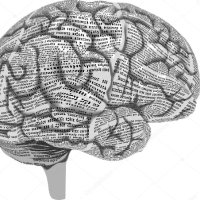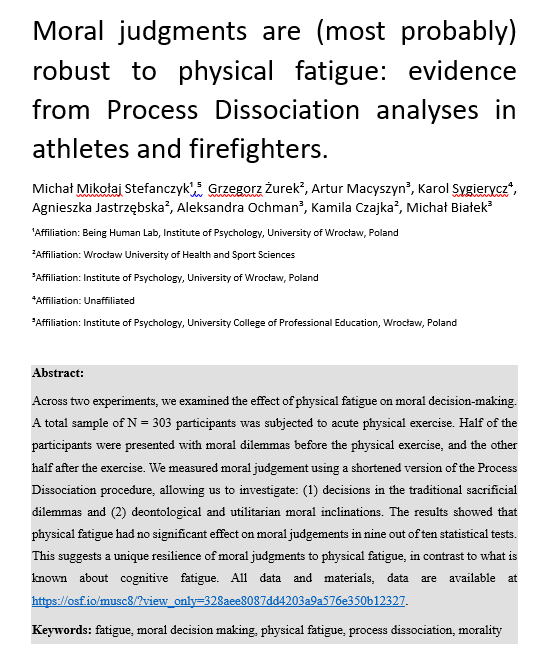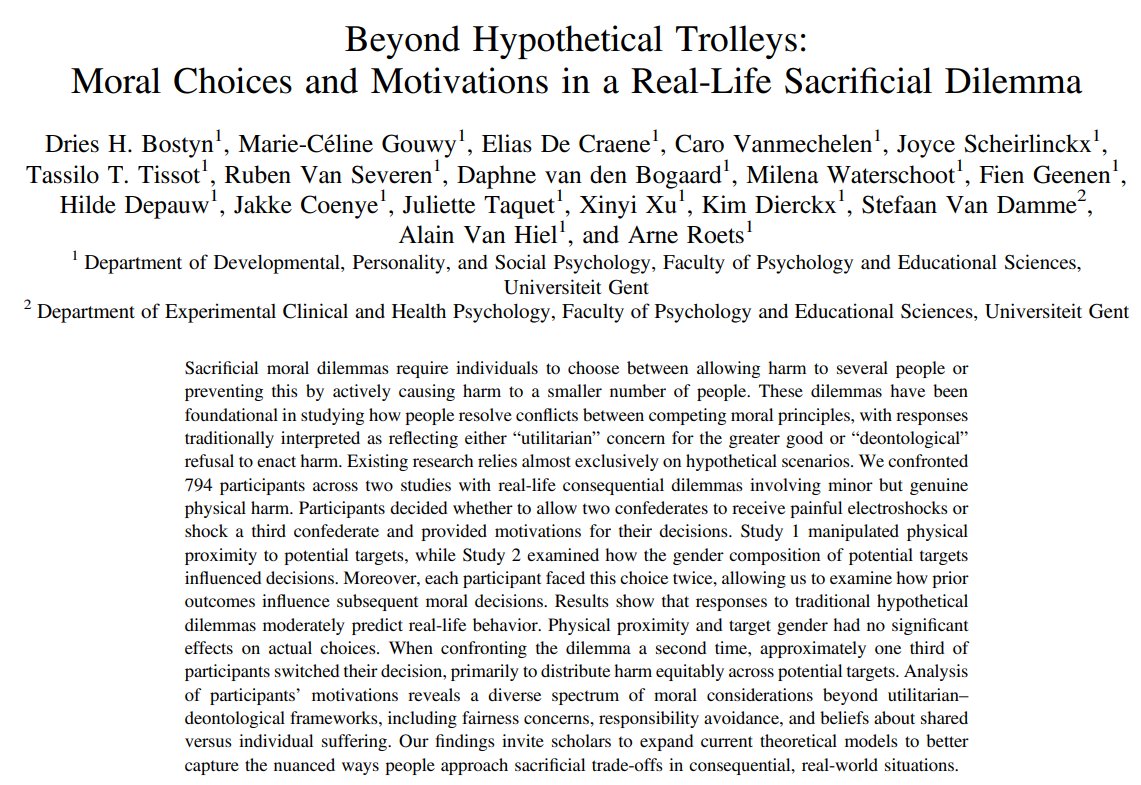
Philip Pärnamets
@philipparnamets
Cognitive scientist interested in social learning, morality, and preference formation. Researching at Karolinska Institutet, Sweden.
ID: 2871858771
https://philipparnamets.github.io 11-11-2014 06:13:42
888 Tweet
716 Followers
946 Following


Does the culture you grow up in shape the way you see the world? In a new Psych Review paper, Chaz Firestone & I tackle this centuries-old question using the Müller-Lyer illusion as a case study. Come think through one of history's mysteries with us🧵(1/13):





Accepted Experimental Psychology - @exppsychjournal.bsky.so Research w Michal M. Stefanczyk challenges assumptions about moral decision-making under fatigue. Study with 303 athletees and firefighters shows moral judgments remain stable despite physical exhaustion. #MoralPsychology #DecisionMaking




Interested in measuring individual differences in altruism/prosocial behavior? Paige Amormino has developed a new, brief assessment that (in my view) is much better than self-report measures or existing economic games. It's called The Social Discounting Short-Form (SDT-SF)






Moral makes us humans, but how morality is made in the brain? New Turku PET Centre preprint with Paulo Boggio worked this out biorxiv.org/content/10.110…👇









